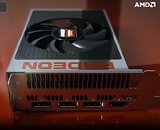- Joined
- Oct 9, 2007
- Messages
- 47,499 (7.49/day)
- Location
- Hyderabad, India
| System Name | RBMK-1000 |
|---|---|
| Processor | AMD Ryzen 7 5700G |
| Motherboard | ASUS ROG Strix B450-E Gaming |
| Cooling | DeepCool Gammax L240 V2 |
| Memory | 2x 8GB G.Skill Sniper X |
| Video Card(s) | Palit GeForce RTX 2080 SUPER GameRock |
| Storage | Western Digital Black NVMe 512GB |
| Display(s) | BenQ 1440p 60 Hz 27-inch |
| Case | Corsair Carbide 100R |
| Audio Device(s) | ASUS SupremeFX S1220A |
| Power Supply | Cooler Master MWE Gold 650W |
| Mouse | ASUS ROG Strix Impact |
| Keyboard | Gamdias Hermes E2 |
| Software | Windows 11 Pro |
It turns out that AMD's new "Fiji" silicon lacks HDMI 2.0 support, after all. Commenting on OCUK Forums, an AMD representative confirmed that the chip lacks support for the connector standard, implying that it's limited to HDMI 1.4a. HDMI 2.0 offers sufficient bandwidth for 4K Ultra HD resolution at 60 Hz. While the chip's other connectivity option, DisplayPort 1.2a supports 4K at 60 Hz - as do every 4K Ultra HD monitor ever launched - the lack of HDMI 2.0 support hurts the chip's living room ambitions, particularly with products such as the Radeon R9 Nano, which AMD CEO Lisa Su, stated that is being designed for the living room. You wouldn't need a GPU this powerful for 1080p TVs (a GTX 960 or R9 270X ITX card will do just fine), and if it's being designed for 4K UHD TVs, then its HDMI interface will cap visuals at a console-rivaling 30 Hz.

View at TechPowerUp Main Site

View at TechPowerUp Main Site
Last edited by a moderator:












